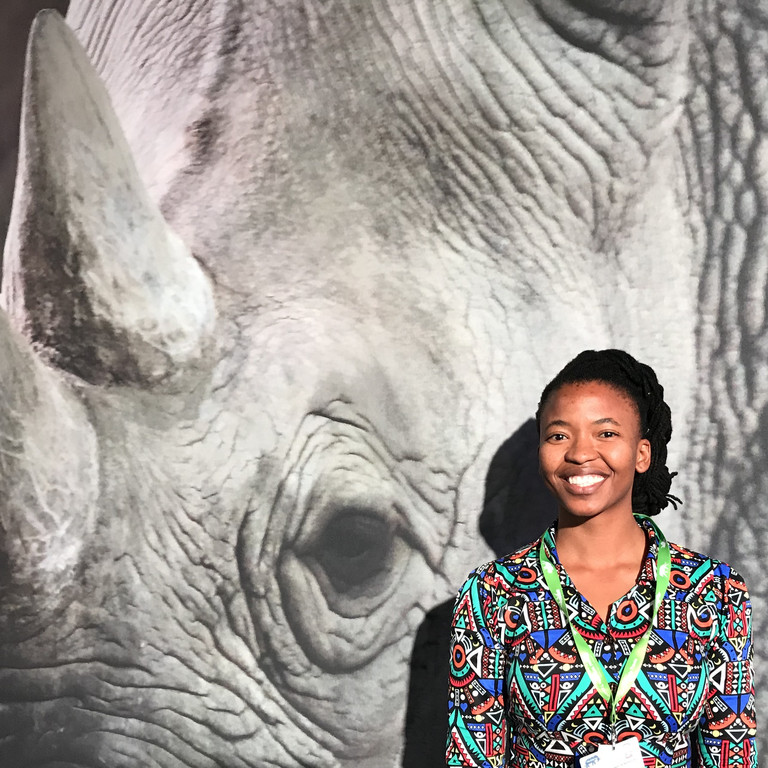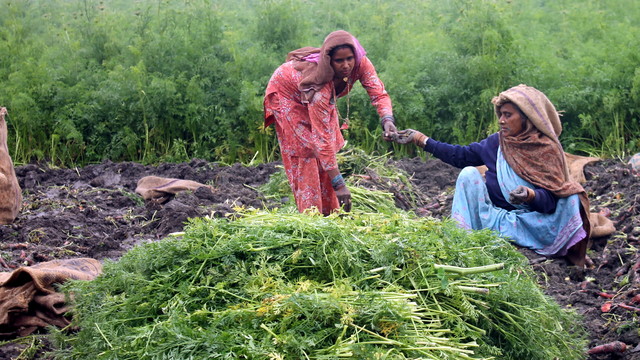Q&A: Community-based natural resource management is the future
Brisetha Hendricks is treasurer of a small Namibian community conservancy and also chairs the Southern Kunene Conservancies Association. In this interview she discusses her work for communal conservancies and the challenges of being a young woman undertaking a senior role in Namibia's conservancy movement.
 Uibasen Twyfelfontein Conservancy is a small communal conservancy covering 286 square kilometres in western Namibia. 'Uibasen' means 'live for yourself' in the local Khoekhoegowab language. Some 230 people live on the conservancy, with a management committee of seven. Brisetha Hendricks is the treasurer, and she also chairs the Southern Kunene Conservancies Association.
Uibasen Twyfelfontein Conservancy is a small communal conservancy covering 286 square kilometres in western Namibia. 'Uibasen' means 'live for yourself' in the local Khoekhoegowab language. Some 230 people live on the conservancy, with a management committee of seven. Brisetha Hendricks is the treasurer, and she also chairs the Southern Kunene Conservancies Association.
In this interview she talks about the importance of community involvement in nature conservation and about being a young woman in the conservancy movement.
Sustainable wildlife management is a key issue being addressed at this year’s conference on the Convention on Biological Diversity (CBD). Why is it important to involve local communities in this?
BH: We cannot begin to speak about sustainability of any sort without considering all the elements that make up that issue. Communities are a very important part of sustainable wildlife management – and not exclusively in conservancies: the rangers employed by governments in national parks come from those very communities whose thoughts are often overlooked.
A substantial number of wildlife populations share communal land with communities located outside state protected areas. As with any minority or underrepresented group, only these communities can accurately tell their story. Equally – as with any minority or underrepresented group – they are not going to start engaging with power structures on their own. The power structures need to create the space to explicitly invite these groups in.
Resource availability will become less and less predictable, so we need to realise now that true sustainability of our wildlife is only going to be possible with the buy-in and empowerment of the communities who were first to care for this wildlife, and who still share their living space with it. These communities have invaluable stores of indigenous knowledge, which is key in continued wildlife management efforts.
Decisions at meetings such as the CBD COP will only be truly meaningful if they are taken with due consideration of what works on the ground, and are in response to the demands from those most affected.
Has Namibia’s model of community-led wildlife conservation been effective in halting or reversing loss of wildlife populations? Can you give examples?
BH: Let me start off by saying that community-based natural resource management (CBNRM) is really future thinking. It’s an honest approach to achieving more success stories such as the increase in wildlife populations we are seeing today.
Wildlife populations should naturally increase because in their natural habitat wildlife species will adapt to survive. The decline in wildlife populations before the implementation of the CBNRM programme in Namibia was the result of two changes, drought and poaching. Drought is something we can only manage so far. The effectiveness of this conservation model should be measured by our response to the latter. Curbing poaching (coupled with better rainfall in recent years) is how wildlife numbers have increased in Namibia.

The reduction of poaching would have been nowhere near this successful without community involvement. The Namibian government has recognised this, and has translocated more than 15 animal species to communal conservancies from national parks.
One of those 15 animal species is the black rhino, which has been reintroduced to conservancies in Kunene. Today, Namibia boasts of having the largest number of the free roaming black rhino populations in the world, most of whom are found in this region.
We are currently running on a zero poaching high, with no poaching of rhino in Kunene in the last 365 days plus!
The increase in wildlife populations on communal land is not the entire success story, though. Communities have matured; people understand that this is what they have, and this is a tool to improve their livelihoods. They understand because they have already felt the benefits.
The CBNRM initiative gave communities a sense of ownership. Many of the community members who were previously poachers turned their ways around and started fighting against poaching after the implementation of the CBNRM programme.
As a woman, have you faced any challenges in holding a senior position within the Namibia conservancy movement, and if so how have you dealt with that?
BH: My time has been good so far; I can sincerely say I have received mostly love and support. Namibia is doing fairly well in terms of women representation in leadership roles. There are also generally more women than men in rural areas so it is not unusual to have women in the frontline.
Within the conservancies I work with there is fair to equal women representation in management, either as conservancy staff members or as conservancy management. Still, the voices heard louder are those of our male counterparts.
The challenge is that holding a leadership role does not necessarily translate into an actual exercise of power in decision making and/or empowerment.
I have only been in this position for a little over six months, and during this time the great struggle hasn’t been coming from external sources necessarily, but from within. I have had to deal with the reoccurring question of whether I am qualified to be representing this community at all. This is partly because of my young age. At times I have felt there are much more seasoned people, more experienced traditional women, perhaps, who can be leading this cause.
I have learned there are traditional relationship dynamics that I have to respect and remain cognisant of. I believe conservation requires an understanding of the traditions underpinning the lives and decision making of communities.
I continue to immerse myself in the profound insight of the traditional women I serve and whose shoulders I stand on.
Moving forward, I would like to see women not only having a role, but the confidence in both men and women that we are equally capable to lead this humble and incredibly crucial cause. That we start believing in our abilities more and continue challenging with due consideration that which we think of as normal.


